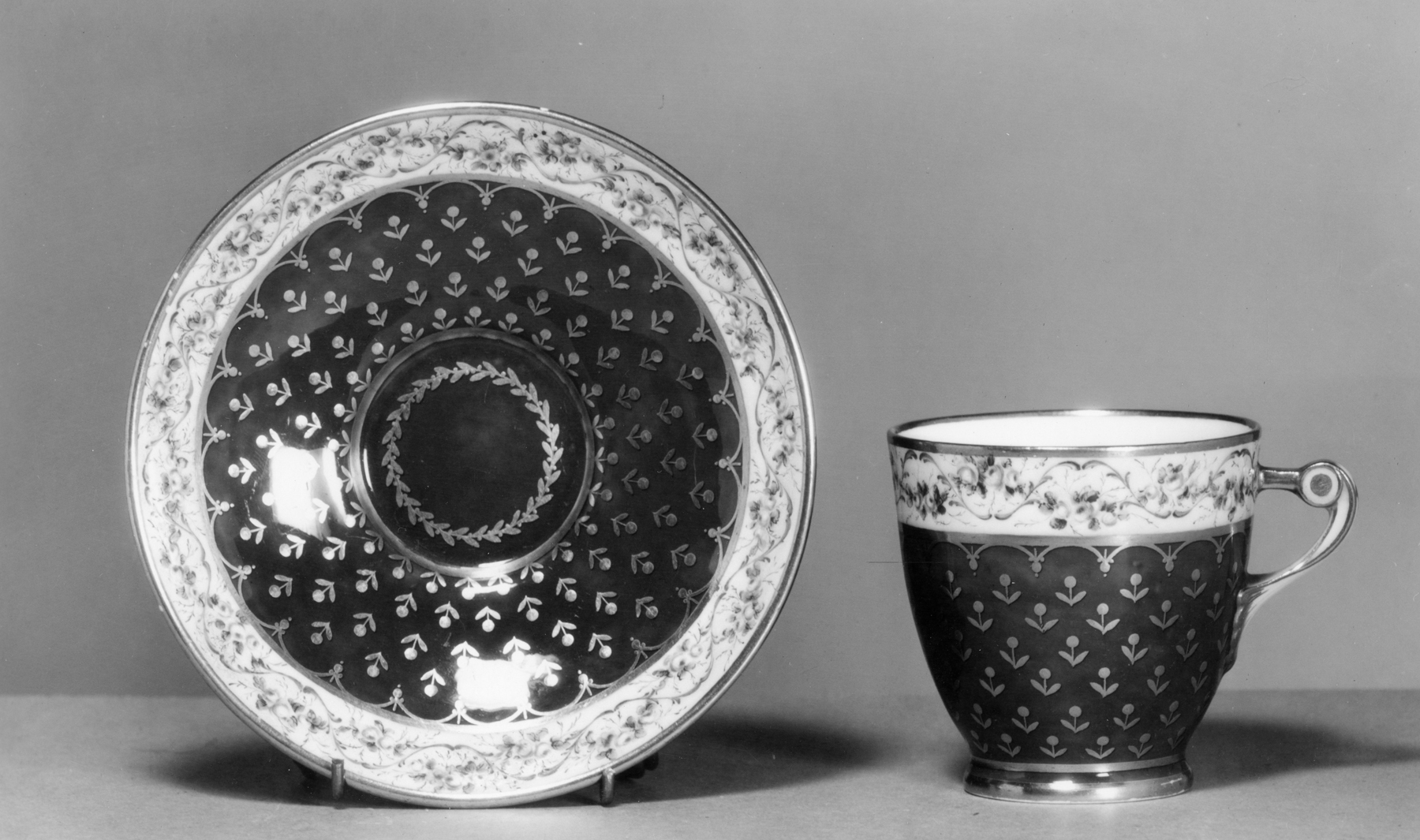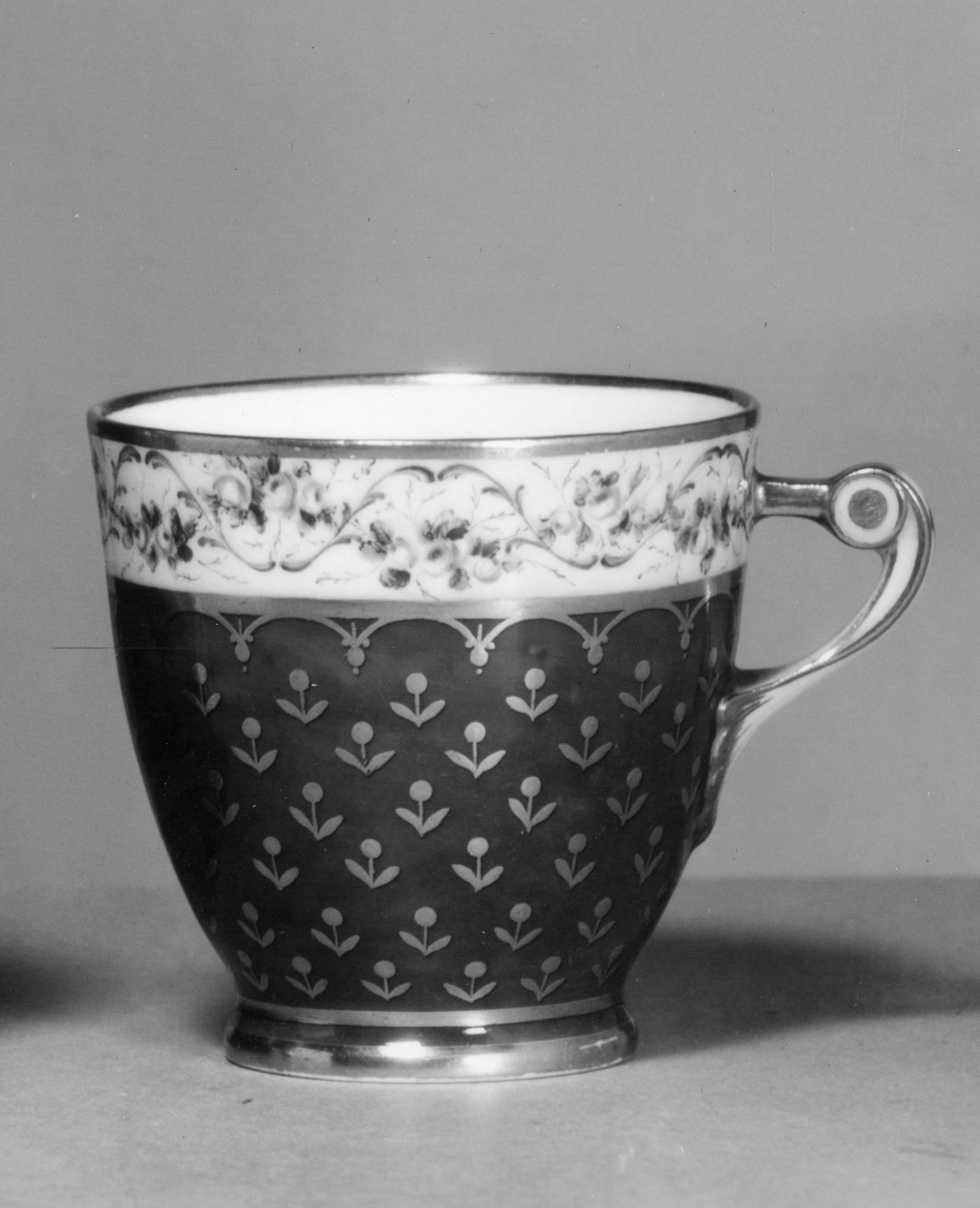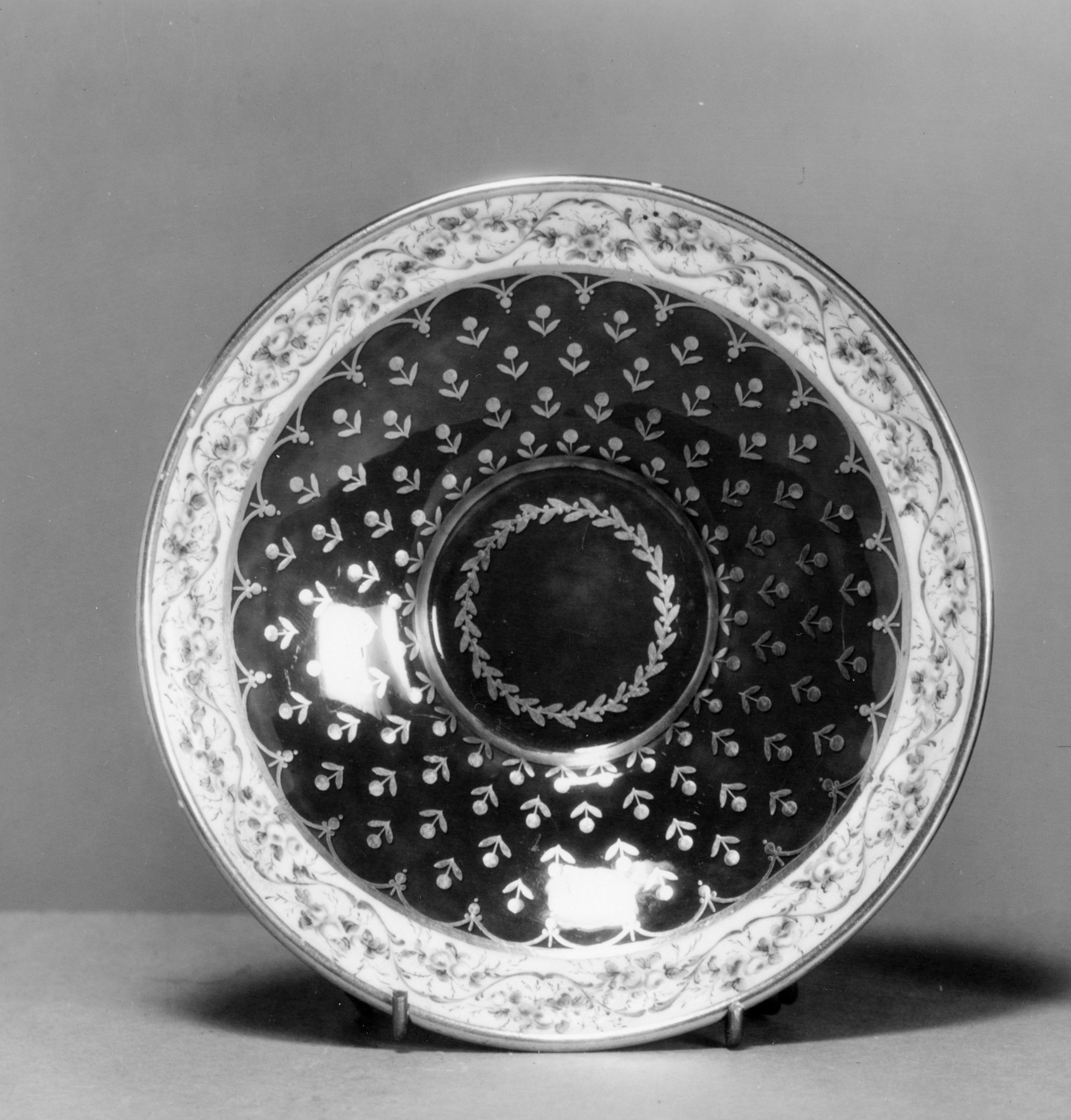Cup and Saucer
This cup and saucer were primarily used to consume tea and would have likely been part of a larger, matching tea service. The shape of the cup is a neoclassical form that recalls ancient vessels, which were being excavated at Greco-Roman archeological sites in the second half of the 18th century. The ornamentation, however, harkens back to mid-century Rococo tastes, especially the soft yellow ground color and pink roses seen in the cup’s upper register and saucer’s boarder. Madame Massy, one of the handful of female painters employed by the Sèvres Manufactory, was responsible for the decorative finishing of this porcelain set. While not much is known about her personal story, the Sèvres archives report that the factory hired her in 1790 to apply detailed finishes; by 1794, when Sèvres was under control of the First Republic, Mme. Massy was identified as a “citoyenne peintre” (citizen painter) who excelled in rendering roses, birds, landscapes, and bouquets.
Inscription
Geographies
France, Sèvres (Place of Origin)
Measurements
Cup (A) H: 2 5/8 × W with handle: 3 1/2 × D: 2 13/16 in. (6.7 × 8.9 × 7.1 cm); Saucer (B) H: 1 1/8 × Diam: 5 1/8 in. (2.9 × 13 cm); Overall Cup & Saucer (A & B) H : 2 15/16 × Diam: 5 1/8 in. (7.5 × 13 cm).
Location in Museum
Not on view
Accession Number
In libraries, galleries, museums, and archives, an accession number is a unique identifier assigned to each object in the collection.
In libraries, galleries, museums, and archives, an accession number is a unique identifier assigned to each object in the collection.
48.691






